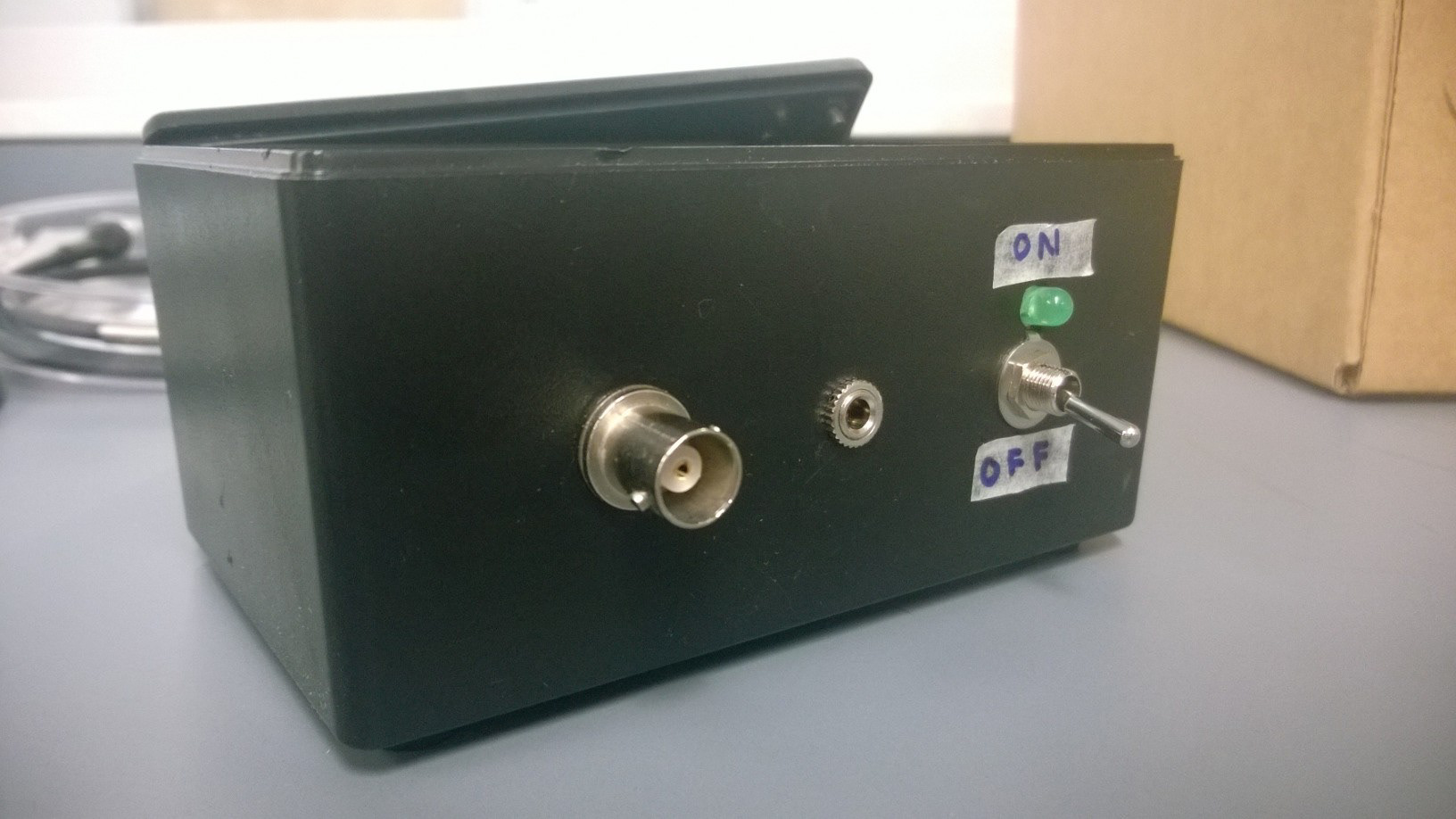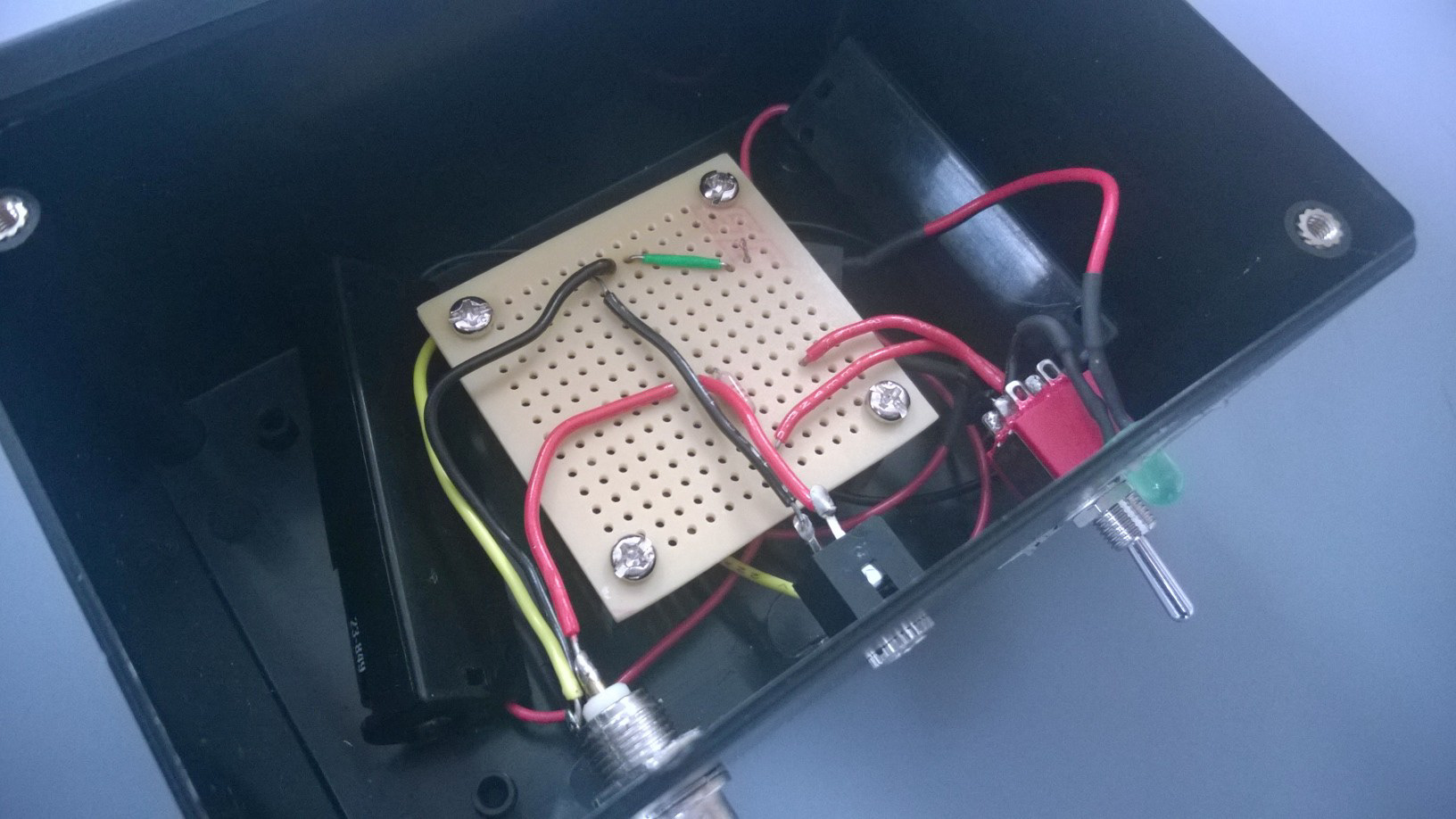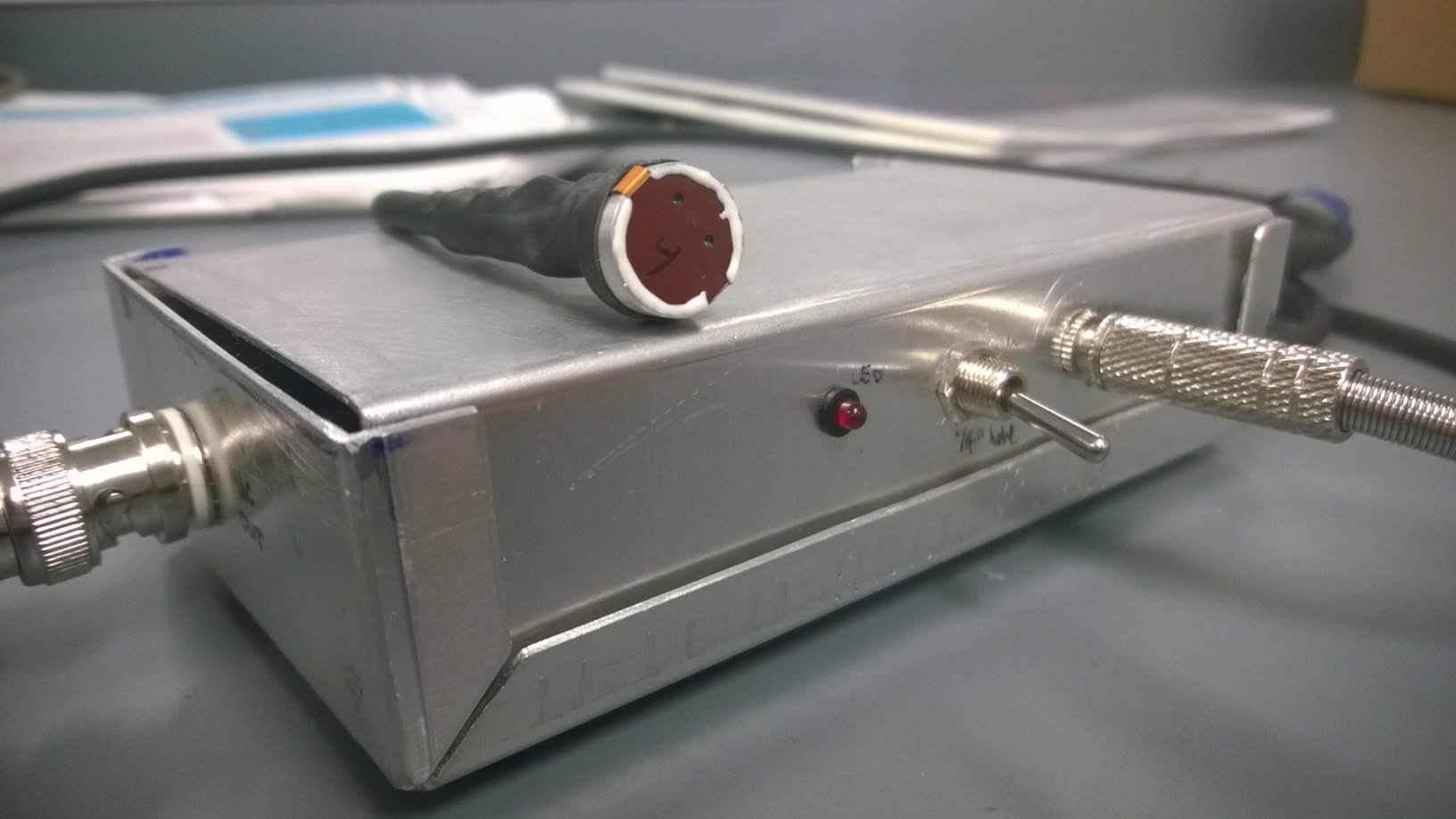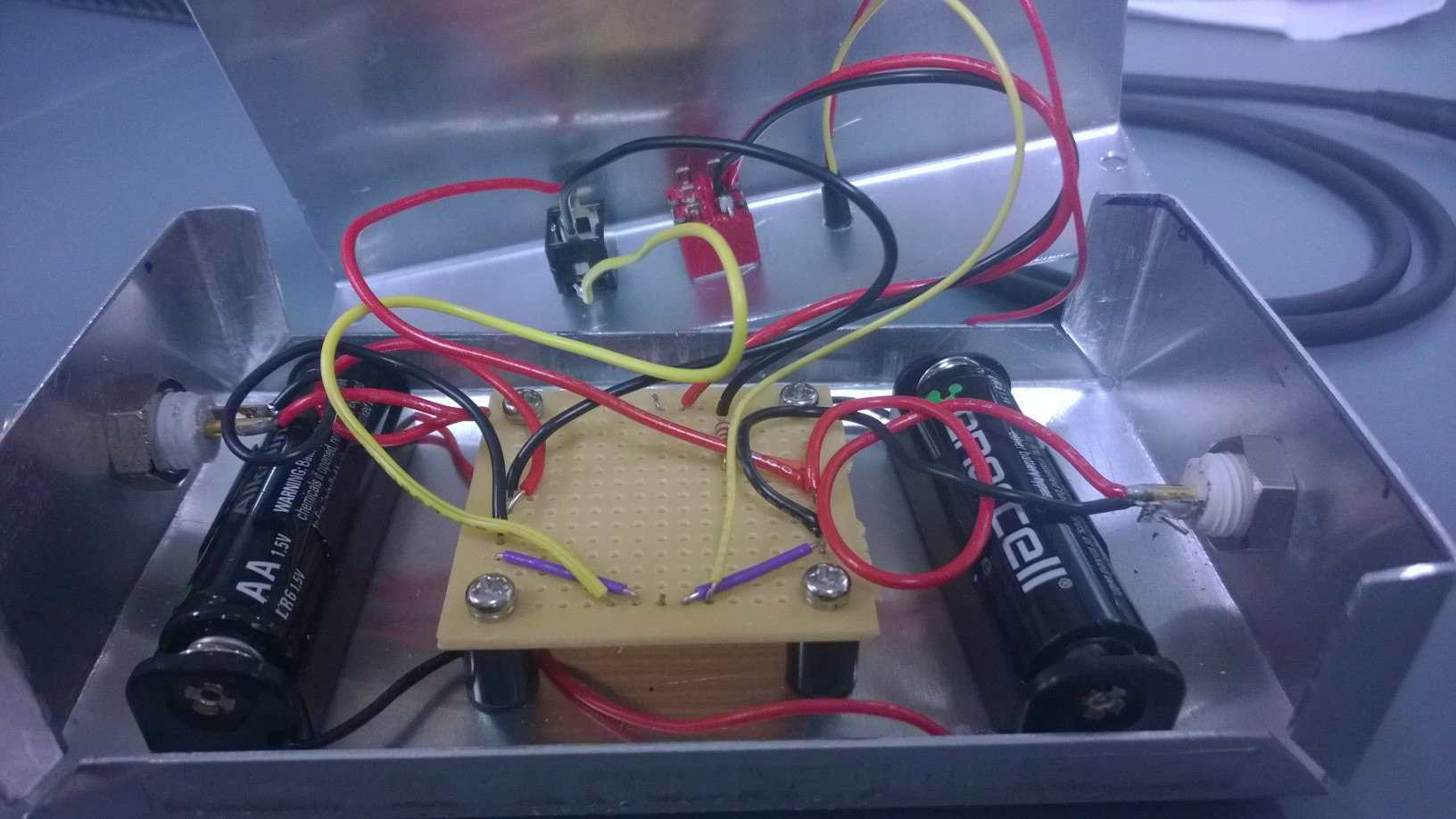As a laboratory assistance in the Acoustics and Vibrations lab at the University of Michigan, I worked under Professor Grosh as he worked towards exploring piezoelectric microphone implants as an alternative to hearing aids for humans.
The main purpose of my research was to analyze self-calibrating piezoelectric microphones and test their accuracy versus lab-quality, industry piezoelectric microphones. Each in-house device had 2 piezoelectric membranes for both a speaker and microphone for self calibration.
Completed piezoelectric microphone created by Professor Grosh's former PhD candidate, Robert Littrell
The first step of the research was to build an interface box to allow the microphone a BNC output to the computer (LabView). This interface box also housed a biasing circuit that I soldered using a circuit diagram from the professor. The biasing circuit was powered with two AA batteries to keep the frequencies at discernible signals prior to amplification.

Final bias box only to accept a split cable piezoelectric

Final wiring for the split box

Completed bias box for a combined cable with amplification input

Final wiring for combined cable bias box
The next part of the process was to calibrate the microphones so they could be reliably tested against an industry standard microphone. We set the microphone in an anechoic chamber and sent a known signal through the speaker, and adjusted the microphone to according to these frequencies.
Anechoic chamber used for self-calibration on the split-cable device
For the experiment, I created a 3D printed adapter for an input tube, an output tube, and to hold both microphones face-to-face to ensure that they received the same signals.
3D printed adapter for the microphones and the input/output tubes
Once the lab-created mic was calibrated and all components were installed, we ran experiments using chirping frequencies and recorded results using LabView. These results were then analyzed with the professor to evaluate microphone accuracy.
The laboratory experiment setup
Key Takeaways:
• Exploring passion for audio devices through lab research
• Working in laboratory environment with ground-breaking research
• Get insights into potential educational career paths